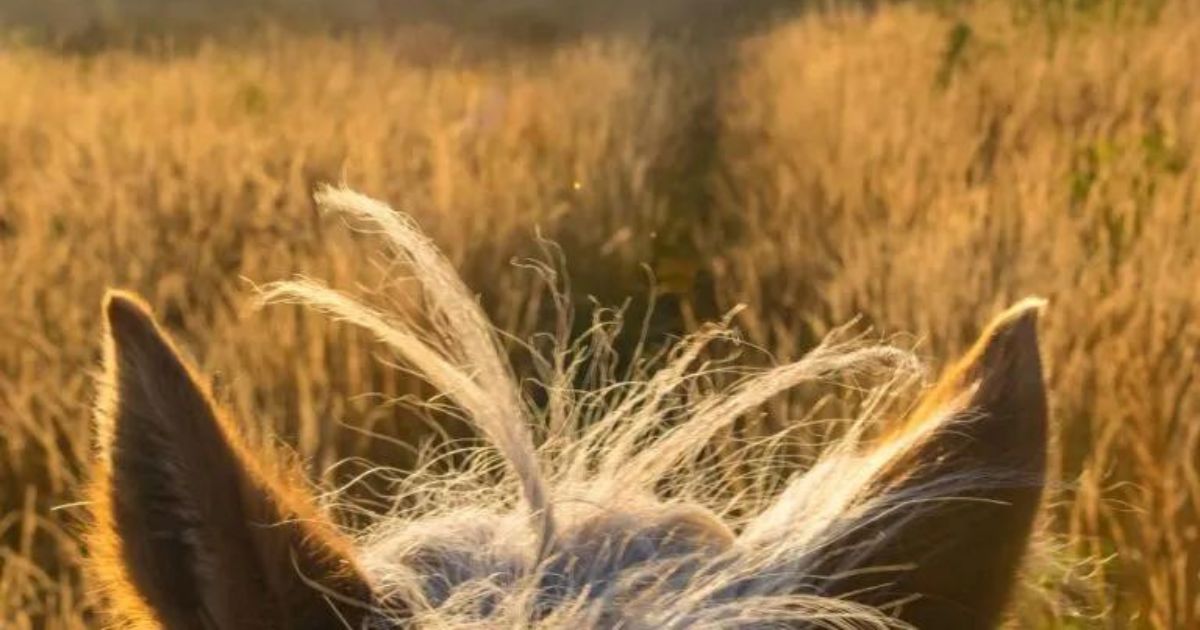Menu

Do you always end up riding the same route? There could be many reasons for this, but there are several different advantages to creating variation in your ride and going to different places.
No matter which discipline you ride, there's no doubt that a trip out into the open can be beneficial for both horse and rider! But there's no reason to always take the same route. Even if you do, there might be untapped potential in your ride.
You might be able to ride slalom between the trees in the forest, practice dressage in the field, or take your horse up and down a small hill. The possibilities are endless!
A ride places different demands on your horse's body and helps to strengthen tendons, joints, and muscles. On a ride, they are used in a completely different way than when you ride in an arena or hall. Riding out is not just riding straight ahead; it is instead an excellent way to train your horse both mentally and physically.
Read also: Do you dare to let go of control and let your horse lead the way on a walk?
But sometimes it can also be nice to just completely disconnect and have no other purpose with your ride than to enjoy each other's company and nature.
If you are one of the riders who must ride along a road to get to a ride in, for example, the forest, there are actually several advantages to this! Even though it may seem a bit unsafe at first, it is an excellent way to make your horse traffic-safe. You could start from the ground and lead your horse. When both you and your horse are comfortable with traffic, you can slowly begin to try from the back as well.
No matter where you ride, you should always ensure that you are visible. Therefore, always remember the reflective gear - especially when riding by the road. Drivers must also be mindful when passing a horse.
If you ride in a large, open field, you should always make sure that you are actually allowed to ride in the field. If you are, there are many possibilities when riding here. For some horses, the very open spaces can be frightening. Therefore, it can be beneficial to lead your horse around the area first.
On the Nature Agency's website, you can find a map of riding routes. Here you can also find general rules for riding in nature. Some places may have individual rules with the municipality, so always check up on these rules when you ride out.
The most obvious opportunity is of course a good gallop in the field! But if you're not so much for speed, you can also try experimenting with dressage in the open, where you can practice everything from straightening to shoulder-in. It places different demands on your horse than riding in an arena or riding house does. In the open field, there are no barriers or fences for the horse to lean against. Moreover, the ground can vary, and this places demands on the horse's proprioception. And not least, it requires a different focus for both horse and rider when training suddenly takes place outdoors.
Read also: 12+ hours optimal: Turnout time influences the risk of soft tissue injuries
You might be one of the lucky riders who have a forest available that you may ride in. Always check the rules beforehand.
The advantages of riding in the forest are many. In the summer, the trees will help create shade, making it a bit more manageable to ride in the summer heat. It's also a good way to train your horse to stay calm when something unexpected happens. In the forest, there will often be many sounds and sudden movements from other animals and birds.
If you have found a really good forest, you might also be lucky enough to find small natural jumps that you can try. Trees and bushes can also be used for slalom riding, so you can test your horse's flexibility. Generally, the forest is also a good place to train the horse's proprioception because it really has to think about how it places its legs.
There are around 8,754 kilometers of coastline in Denmark. It may well require that you get your horse into the trailer and drive a bit after it, but it's all worth it! There isn't much that beats a good trip by the water with your horse.
Read also: Veterinarian Michael Sinding: Too many horses are misunderstood
It's terrific training for your horse to walk in the sand - or right out into the water if the conditions allow it, and your horse dares. In addition, it's good environmental training because there are often many sounds and many people by the water.
You may ride on beaches and dune-protected areas from September 1 to May 31, if there is legal access. This means that you must be able to get to the beach via roads and paths where riding is allowed. You may not ride in vegetation if the beach is dune-protected. On other beaches, you may only ride over vegetation to get to the un-vegetated part of the beach.
We can't say it enough, but riding on hills is and remains a brilliant training for your horse! Regardless of the pace, it's an excellent way to train both your horse's front, back, and back. Both riding up and down hills can be beneficial. If you, for example, ride downhill, your horse really needs to activate the hindquarters and get them well under itself to maintain balance.
Where does your next ride go?
Sources:
Danish Nature Conservation Association: Vacation in Denmark: 5 protected coasts you should visit
EquiPepper: Why you should mix up your hacking
Outdoor Council: What you are allowed on the Danish beaches - also the private ones